Here’s a question I received in the comments:
Speaking of kale, would you say more about the Food gathering and raising possibilities there, what folks rely on for food resources. Also what is considered a healthy diet, and how does that compare to what you know to be healthy?
OK, let’s take a look at this from past, future, and current reality.
The people of this land were gatherer-hunters for many thousands of years. Salmon are the big deal and run up the river in the summer, in other season there are different species of white fish available. Heading downriver also can provide a seal, which renders a vitamin rich oil, and the skins are very useful. Hunting can provide caribou and moose for meat, and a variety of critters are trapped for fur. In the late summer there are many kinds of berries that are collected, as well as other nutritional and medicinal plants.
This is a topic that there are many, many books about, so know that this is a very brief overview. It is worth diving into, though! Indigenous traditional hunting, fishing, gathering, and preserving technology is truly amazing.
Also, for a brief time in the 1890s – 1940s the US Government (via Sheldon Jackson) was encouraging the locals to raise reindeer. We imported Sami people from Scandinavia, and had a bit of a thing going, but, in the end, I guess people where like, “meh” to that lifestyle. But of course some of those Sami folks married into the local population, so there are still some echos from that time with us now.
For many families, some level of gathering and hunting is still important, to varying degrees. Having a good store of dried fish a a freezer full of moose is pretty common, though I don’t think there is anyone living here that isn’t supplementing that food with store-bought goods.
Up until the ice in the rivers was too dangerous to walk on, there were some people ice fishing. The traditional way to preserve these fish is to let them air dry. I saw only three houses with fish outside, though maybe some folks are just putting the fish in their freezers.
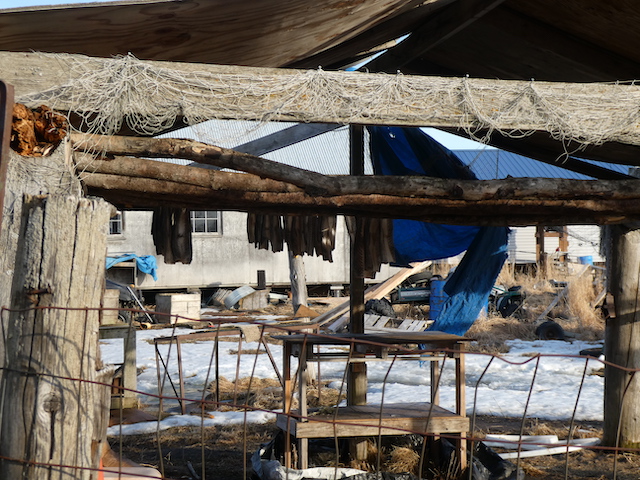

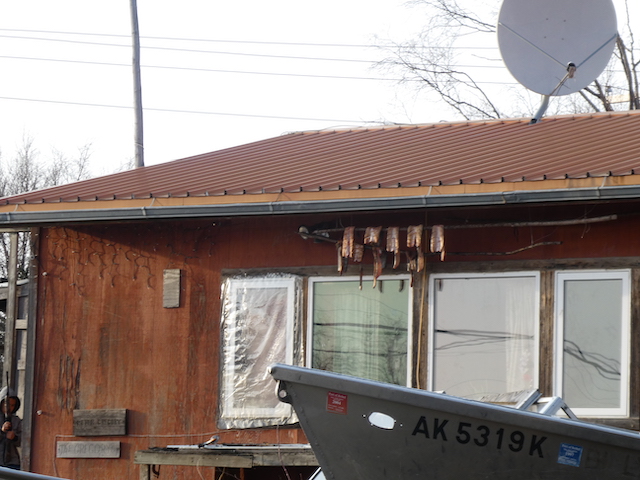
There has been some funding from the school district to explore growing local food. It is really difficult to do any kind of farming/gardening outside. The dirt would be really good except it is very wet, and very cold. Someone tried a high-tunnel box outside of teacher housing, but it doesn’t look like anything has happened on that front for a few years.
The school has some hydroponic equipment – some of which has been put to use. Of course, this kind of growing is very energy intensive, but since the school has a generator running full time, maybe not such a big deal. Still, the plants that are growing in the hydro units are pretty anemic. The english teacher, (who was a Kansas farm girl, and knows her grow) says that the water is still too cold. She would like to see a system that uses plain old dirt, but heats the soil using a wood-fired system.
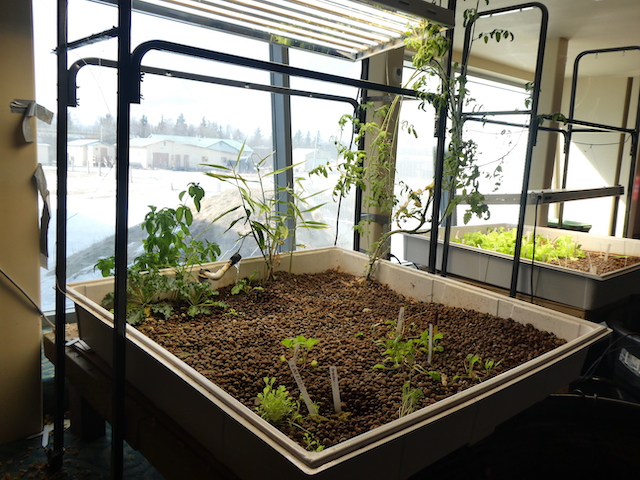
There is some sort of objective in a current school district grant to “Initiate an Agriculture and Farm to Table Program” but I haven’t seen any activity on this front. My fear is that we’ll see another huge investment in equipment for another thing that nobody here asked for or wants.
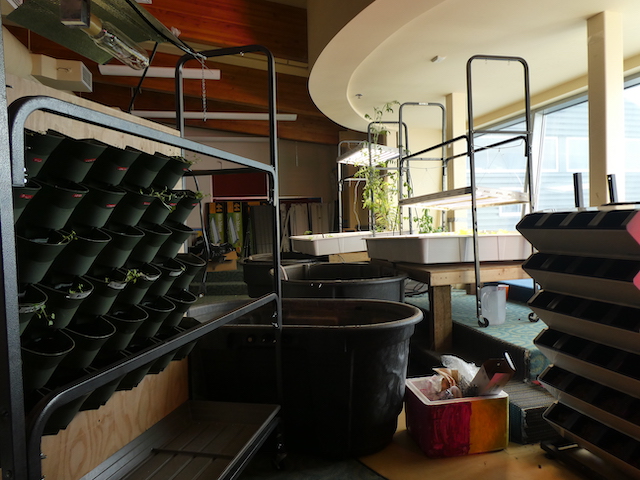
My two bits on local food production is that maybe that is a thing worth investing in sometime in the future, but for now we need to focus on the more immediate needs of health, welfare, and education.
And of course, there is the village store. It is mostly filled with pre-packaged foods. There are 6 big freezers, all loaded with stuff, but even then, I can’t get just frozen chicken parts. I can get P.F.Changs General Tso’s Chicken that just needs microwaved. So, you get the point.
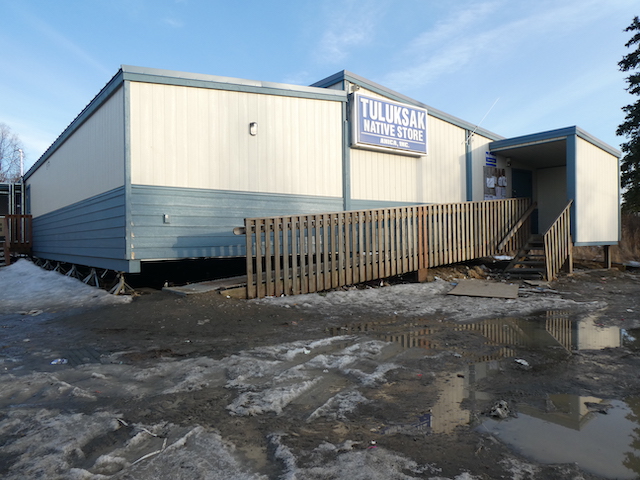
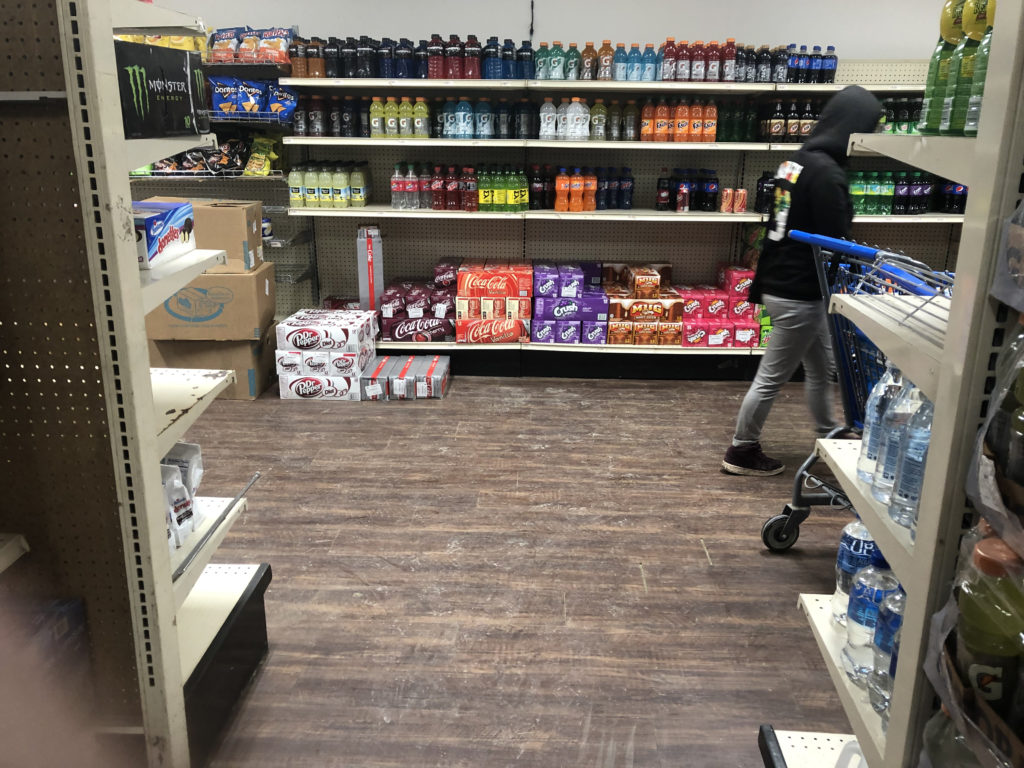
Vegetables are tough to come by. I don’t think the store gets much, because I don’t think there are many people buying them. Though, I think the store also operates on the same system my mom had growing up, which is we don’t get anything new until the stuff in the freezer is used up. So, the ONLY frozen veggies I could find are cauliflower. Like, probably 20 pounds of it. And I don’t think that is ever going to get bought. Maybe I can get a coalition of people to buy it all up and petition the store for broccoli.

In the pictures above, the vegetables you see above are literally the only ones at the store as I type. It can fluctuate. The first three weeks I was here, there was no live food. The next three there were some potatoes, onions, garlic, and for whatever reason, 2 dozen kiwi fruit.
So, what do people consider a healthy diet? That depends on who you ask. I can tell you that the Yup’ik people, like most North American indigenous folk, are genetically wired to work best on traditional food. With bodies designed to make the most of the calories they collected, the introduction of high sugar, high empty fat foods, like most of what is offered at the store, has led to obesity and diabetes for too many people.
Me? I like green things. There is precious little of that available here. I am so fortunate that I can fly out and back once a month. Each time I do, I bring a plastic tote with exactly 50 lbs. of food. I just finished the last of my kale. I’ve got a half a cabbage, some beets, and some carrots left. Sturdy things that can fly all day and get banged about.
Keep those questions coming!